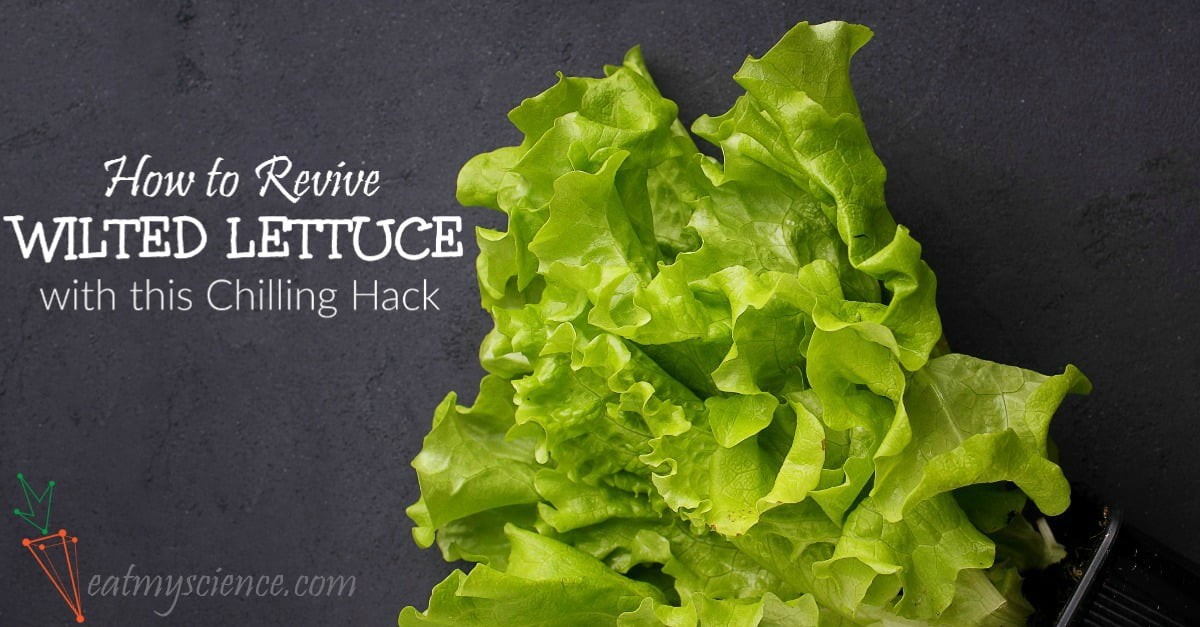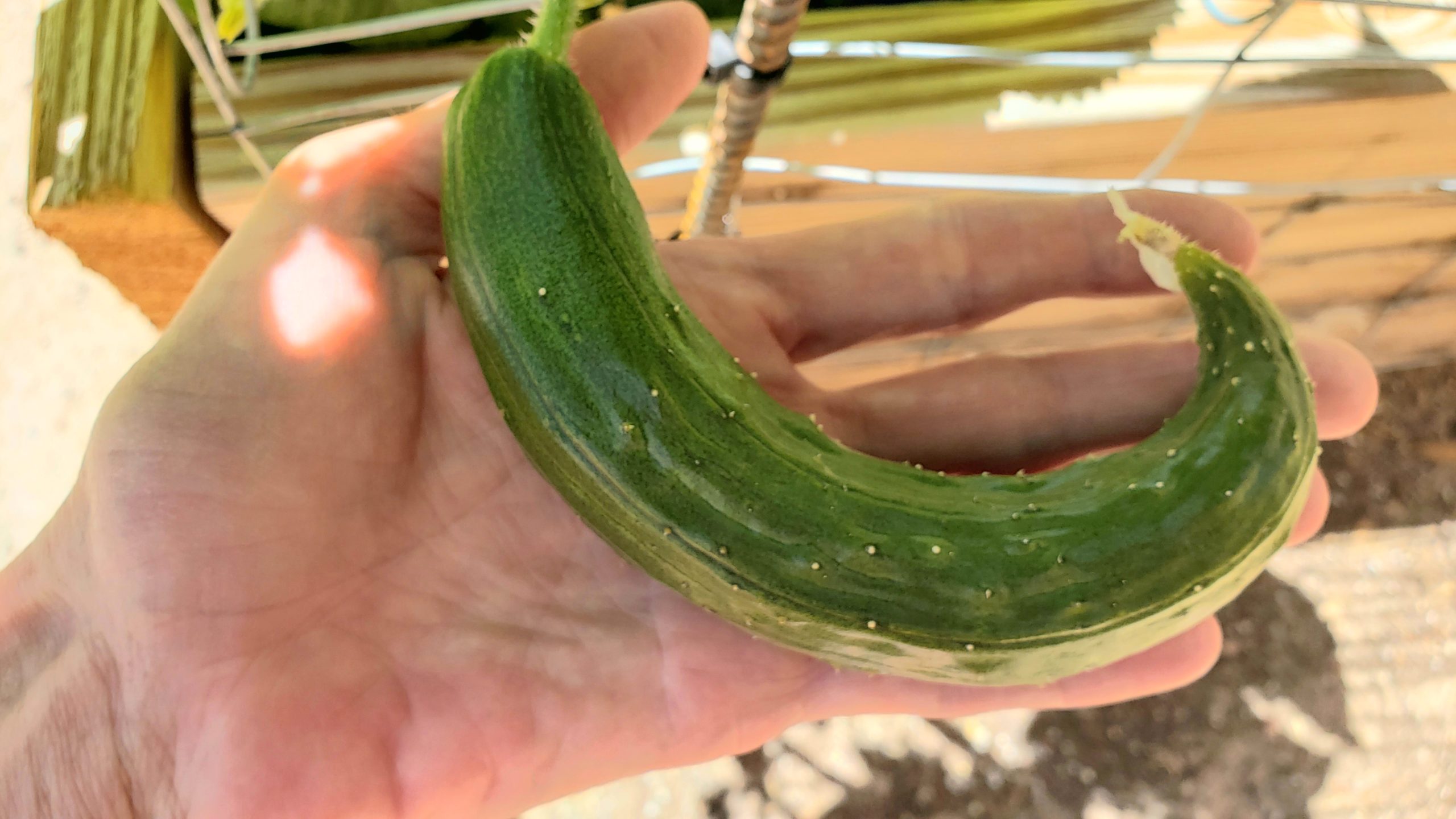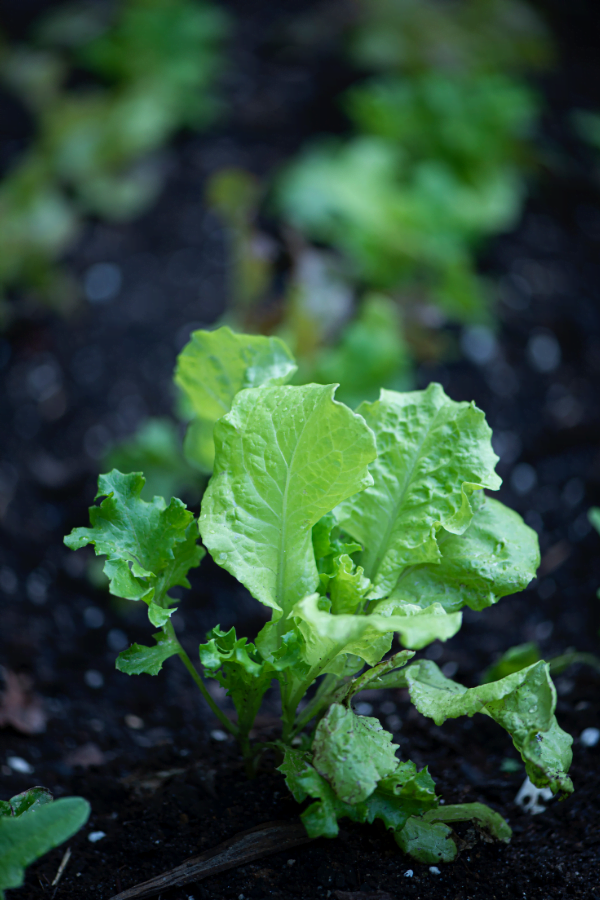So, have you ever wondered why lettuce becomes so nice and crispy when you soak it in water? It’s like magic, right? Well, let me tell you, it’s not magic at all, but rather a fascinating scientific process. When you submerge lettuce in water, those tiny pores on its surface start to fill up with moisture. This influx of water causes the cells in the lettuce leaves to expand, making them plump and firm. The result? A satisfying crunch that adds a refreshing element to your salads or sandwiches. But there’s more to it than just that – let’s dig deeper into the science behind why lettuce transforms into crisp perfection when soaked in water.
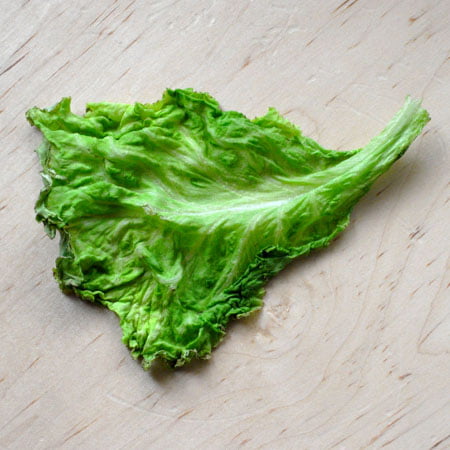
The Importance of Water for Lettuce
Lettuce is a popular and versatile vegetable that is widely enjoyed in various dishes. One of the key factors that contribute to the quality of lettuce is its crispness. When you bite into a fresh and crisp leaf of lettuce, it adds a satisfying crunch to your meal. But have you ever wondered why lettuce becomes crisp when soaked in water? In this article, we will explore the importance of water for lettuce and the various factors that affect its crispness.
Water Content in Lettuce
Water plays a vital role in the composition of lettuce. In fact, lettuce has a high water content, typically ranging from 90% to 95%. This high water content contributes to its overall juiciness and succulence. When you soak lettuce in water, it allows the vegetable to reabsorb moisture, thereby enhancing its crispness. The water content in lettuce is not only important for its texture but also for its nutrient content. Many essential nutrients in lettuce are water-soluble, and therefore, maintaining proper hydration is crucial to retain these nutrients.
Role of Water in Plant Tissues
Water is essential for the survival and growth of all living organisms, and plants are no exception. Within plant tissues, water plays a crucial role in various physiological processes. One of the most important functions of water in plants is the maintenance of turgor pressure.
Turgor Pressure and Crispness
Definition of Turgor Pressure
Turgor pressure refers to the pressure exerted by the fluid contents (cell sap) inside plant cells against their cell walls. It is the force responsible for maintaining the firmness and rigidity of plant tissues. When the plant cells are fully hydrated, the turgor pressure is at its maximum, resulting in a crisp and firm texture.
Relationship between Turgor Pressure and Cell Wall
The cell wall is a rigid structure that surrounds plant cells and provides support and protection. The turgor pressure exerted by the fluid inside the cell pushes against the cell wall, creating a firm and rigid structure. The combination of turgor pressure and cell wall strength is what gives lettuce its crisp texture.
Effects on Lettuce Crispness
When lettuce leaves lose water and become dehydrated, the turgor pressure within the cells decreases, resulting in a loss of crispness. By soaking lettuce in water, the cells rehydrate, and the turgor pressure is restored, leading to the rejuvenation of its crisp texture. This is why soaking lettuce in water can effectively revive wilted or limp leaves and bring back their freshness.
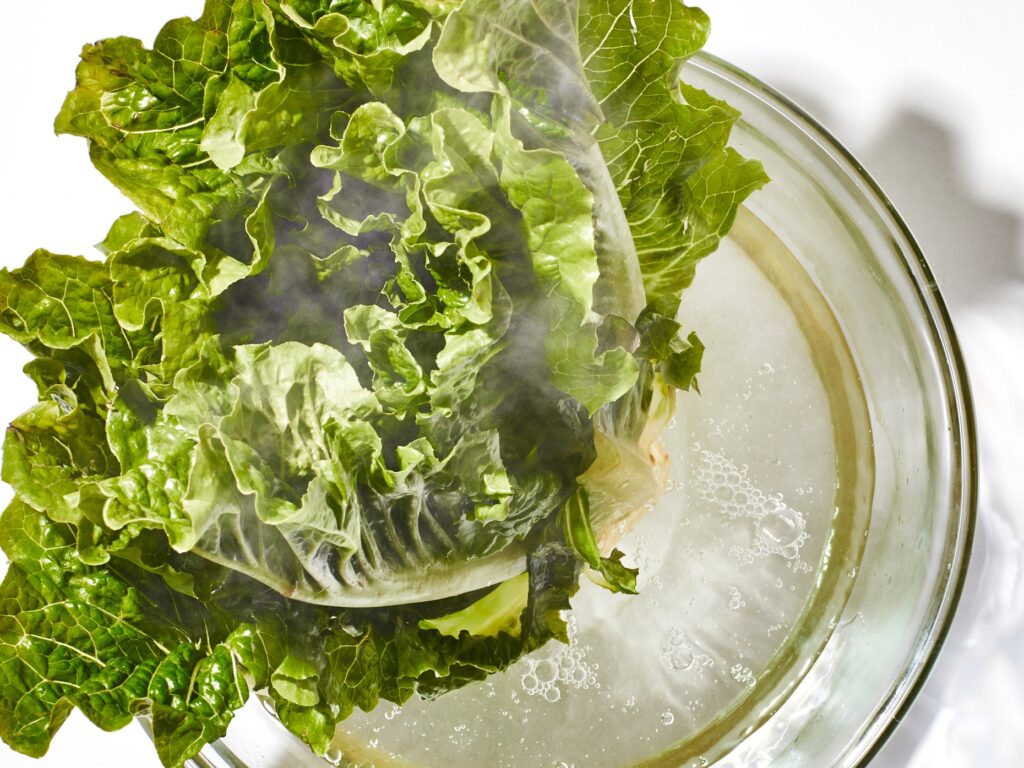
Osmosis and Water Absorption
Understanding Osmosis
To understand how lettuce absorbs water and increases its turgor pressure, we need to learn about osmosis. Osmosis is the process by which water molecules move from an area of higher water concentration (dilute solution) to an area of lower water concentration (concentrated solution) through a semi-permeable membrane.
Osmosis in Lettuce Cells
In the case of lettuce, when it is submerged in water, osmosis occurs. The water molecules pass through the semi-permeable membrane of the lettuce cells, moving from the surrounding water into the cells where the concentration of solutes is higher. This influx of water into the cells helps reestablish the turgor pressure, contributing to the crispness of lettuce.
Water Absorption and Increased Turgor Pressure
As the lettuce cells absorb water through osmosis, their volume increases, resulting in increased turgor pressure. This rehydration process is crucial for maintaining the structural integrity and firmness of lettuce, making it crisp and refreshing to eat.
Factors Affecting Crispness
While water absorption plays a significant role in enhancing lettuce crispness, there are several other factors that can affect the texture of lettuce. Let’s explore some of these factors:
Temperature and Crispness
Temperature plays a crucial role in maintaining the crispness of lettuce. Storing lettuce at temperatures below its freezing point can result in cell damage, leading to a loss of crispness. On the other hand, exposure to high temperatures can accelerate water loss from the lettuce leaves, causing them to wilt and lose their crisp texture. Therefore, it is important to store lettuce at cool temperatures to preserve its crispness.
Time Duration of Soaking
The duration of soaking lettuce in water can also impact its crispness. Over-soaking lettuce for an extended period can lead to excessive water absorption, causing the cells to become overly hydrated and lose their firmness. It is recommended to soak lettuce for a moderate amount of time, typically around 10-15 minutes, to achieve the desired crispness.
Treatment with Salt or Vinegar
Adding salt or vinegar to the water while soaking lettuce can enhance its crispness. Salt helps to draw out excess moisture from the lettuce leaves, reducing their water content and increasing their crispness. Vinegar, on the other hand, can help to maintain the pH balance of the lettuce and prevent the growth of bacteria, thereby prolonging its crispness.
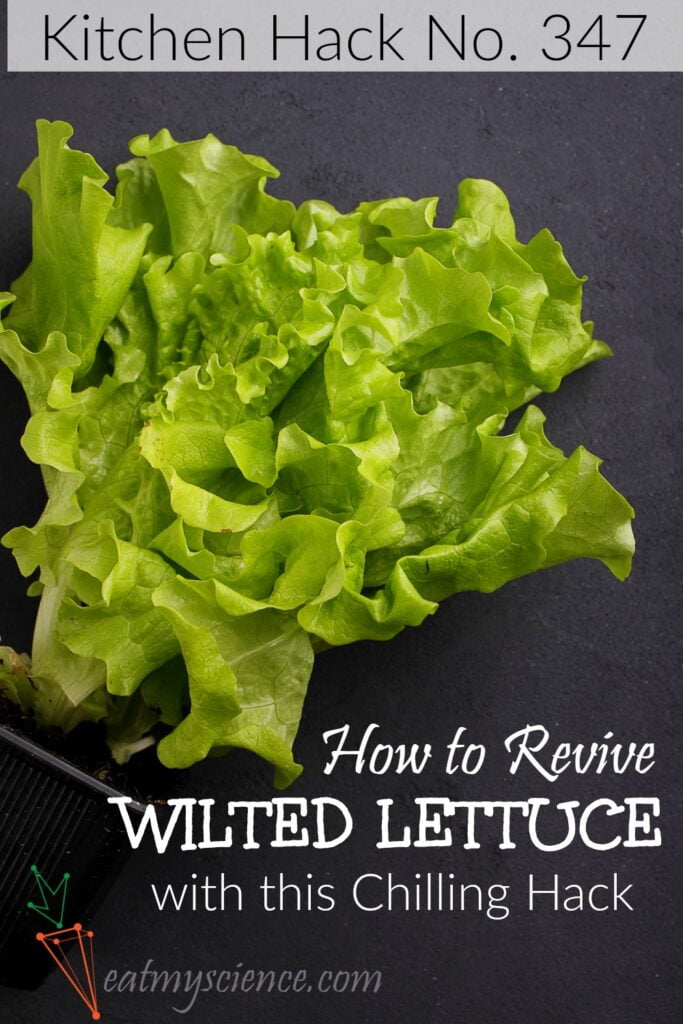
Mechanical Effects on Cell Walls
Breaking Down Cell Walls
Besides water absorption, mechanical effects can also play a role in altering the structure of lettuce cell walls. Techniques such as tearing, shredding, or cutting lettuce can physically break down the cell walls, resulting in a softer texture. These mechanical processes cause the cells to release water, reducing turgor pressure and crispness.
Formation of Air Spaces
Mechanical processes can also create air spaces within the lettuce leaves. When lettuce is cut or torn, the rupture of the cell walls creates small air pockets. These air spaces act as barriers, preventing direct contact between the lettuce cells and external moisture. As a result, the lettuce loses its crispness and becomes limp.
Effects on Crispness
While mechanical effects can alter the texture of lettuce, they are not always desirable if you are looking for crispness. To maintain the crispness of lettuce, it is recommended to handle it gently and avoid excessive tearing, cutting, or shredding.
Effects of Ice Water Soak
Understanding the Ice Water Soak Method
The ice water soak method is a technique often used to enhance the crispness of lettuce. The process involves submerging lettuce in a bowl of ice-cold water for a certain duration. This method is particularly effective when you want to revive wilted or limp lettuce leaves and restore their freshness.
Formation of Ice Crystals
When lettuce is soaked in ice water, the cold temperature causes the water within the cells to freeze, forming ice crystals. These ice crystals act as structural support, reinforcing the cell walls of lettuce. As the lettuce thaws, the ice crystals melt, releasing water back into the cells and re-establishing the turgor pressure, thereby enhancing its crispness.
Enhancing Crispness
The ice water soak method is an excellent way to rejuvenate lettuce and increase its crispness. By absorbing the ice-cold water, the lettuce cells rehydrate and regain their firmness, resulting in a revitalized texture that is remarkably crisp.
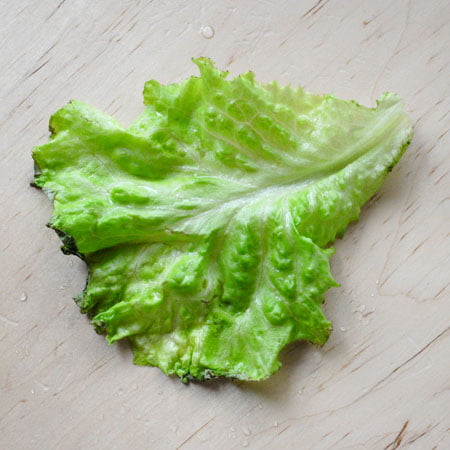
Potential Risks of Soaking Lettuce
While soaking lettuce in water can have beneficial effects on its crispness, there are a few potential risks associated with this practice. Let’s take a look at some of these risks:
Microbial Growth
When lettuce is soaked in water, it creates an ideal environment for microbial growth. Bacteria, fungi, and other microorganisms present in the water can multiply rapidly and contaminate the lettuce, posing a risk to food safety. To minimize the risk of microbial growth, it is important to ensure that the water used for soaking lettuce is clean and uncontaminated.
Loss of Water-Soluble Nutrients
While soaking lettuce in water can help maintain its crispness, it can also lead to the loss of water-soluble nutrients. Certain vitamins and minerals present in lettuce, such as vitamin C and some B vitamins, can leach out into the water during soaking. To minimize nutrient loss, it is recommended to soak lettuce for a shorter duration and avoid excessive water soaking.
Alternative Methods to Increase Crispness
If you want to enhance the crispness of lettuce without soaking it in water, there are several alternative methods you can try:
Refrigeration
Storing lettuce in the refrigerator can help maintain its crispness. The cool and humid environment of the refrigerator slows down the rate of water loss from the lettuce leaves, keeping them crisp and fresh for a longer period. It is important to store lettuce in a sealed bag or container to prevent excessive moisture loss.
Blanching
Blanching is a cooking technique that involves briefly immersing lettuce leaves in boiling water and then immediately transferring them to ice-cold water to halt the cooking process. Blanching helps to partially cook the lettuce, resulting in a softer texture while preserving its crispness. This method is commonly used in various recipes where lettuce is incorporated into cooked dishes.
Using Lettuce Crispers
Lettuce crispers are specially designed containers or bags that provide a controlled environment for storing lettuce. These crispers help to maintain the ideal moisture levels and humidity, preventing the lettuce from wilting or drying out. Using lettuce crispers can significantly extend the shelf life and crispness of lettuce.
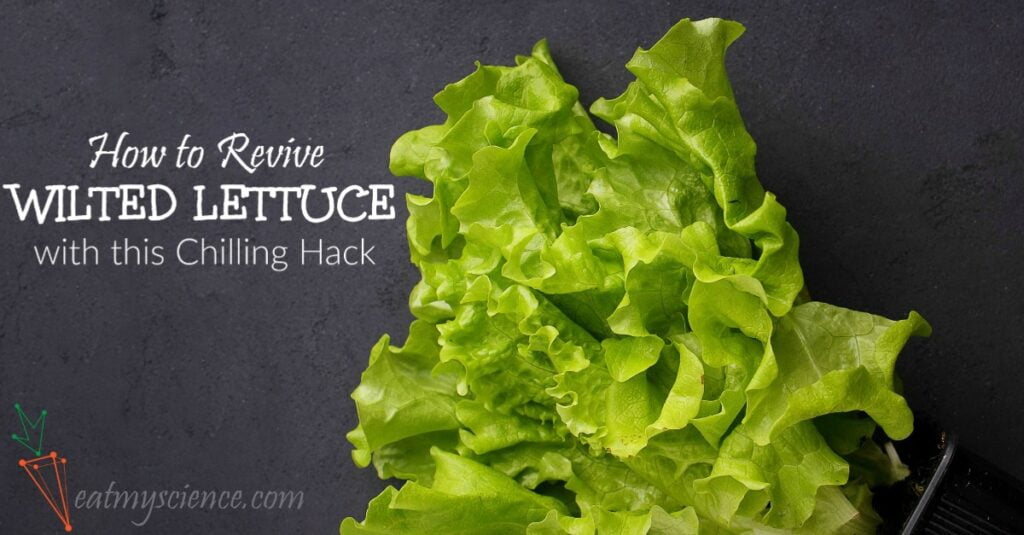
Differences in Crispness Among Lettuce Types
Not all lettuce varieties are created equal when it comes to crispness. Let’s take a look at some of the commonly available lettuce types and their characteristic crispness:
Romaine Lettuce
Romaine lettuce is known for its excellent crispness. Its long and sturdy leaves have a satisfying crunch that adds texture to salads and sandwiches. Romaine lettuce holds up well even when dressed with heavier toppings or dressings, making it a popular choice for Caesar salads.
Butterhead Lettuce
Butterhead lettuce, such as Boston lettuce and Bibb lettuce, has a softer and more delicate texture compared to other lettuce types. While these varieties may lack the firmness and crunch of other lettuces, they make up for it with their buttery flavor and tenderness. Butterhead lettuce is often used as a base for delicate salads or as a wrap for fillings.
Iceberg Lettuce
Iceberg lettuce is perhaps the most widely recognized lettuce variety, thanks to its crispy and refreshing nature. Its tightly packed leaves offer a satisfying crunch and a mild flavor. Iceberg lettuce is commonly used in salads, burgers, and sandwiches for its crispness and ability to hold up well against heavy toppings.
Conclusion
The crispness of lettuce is a highly desirable characteristic, adding texture and freshness to various dishes. Water plays a crucial role in maintaining the crispness of lettuce by replenishing its moisture and restoring turgor pressure. Soaking lettuce in water, using techniques like the ice water soak method, can revitalize wilted leaves and enhance their crispness. However, it is important to be mindful of potential risks such as microbial growth and nutrient loss during soaking. Alternative methods, such as refrigeration, blanching, and using lettuce crispers, also offer ways to increase the crispness of lettuce. Remember that different lettuce types have varying degrees of crispness, with romaine lettuce being known for its excellent crunch. By understanding the factors that contribute to crispness and practicing proper lettuce handling, you can enjoy crisp and refreshing lettuce in your meals.
